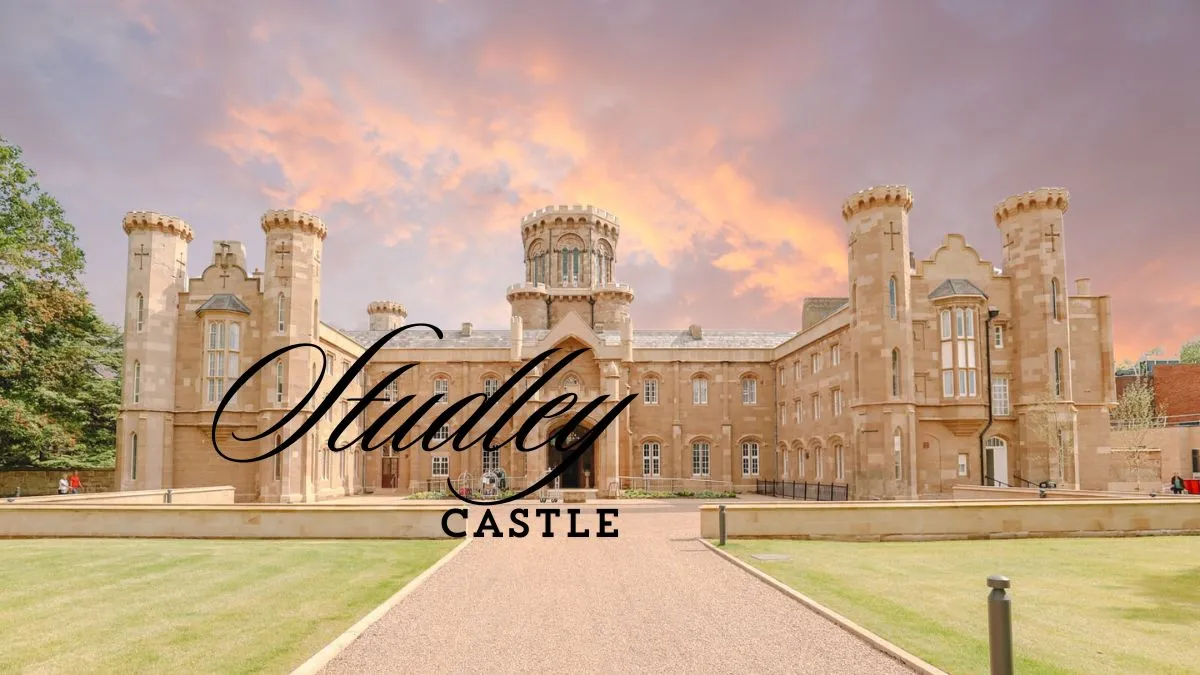Nestled in the picturesque Warwickshire countryside, Studley Castle stands as a testament to England’s rich architectural heritage and the fascinating histories of the families that once resided within its walls. This 19th-century country house, now operating as a Warner Leisure Hotel, is a Grade II listed building known for its striking Gothic Revival style. To understand the significance of Studley Castle, it is essential to delve into its origins, the notable figures associated with it, and its architectural marvels.
The Origins and Early History of Studley Castle
Studley Castle’s story begins with the Lyttelton family, a prominent lineage in British history. Originally, the property where the castle now stands was part of the Lyttelton estate. The Lyttelton family’s influence and wealth were instrumental in shaping the estate’s early years, establishing it as a notable feature of the Warwickshire landscape.
In the early 19th century, Philip Lyttelton bequeathed the estate to his niece, Dorothy. Dorothy’s marriage to Francis Holyoake marked a significant turning point for Studley Castle, intertwining the destinies of the Lyttelton and Holyoake families. Their union laid the foundation for the future transformation of the estate.
The Holyoake-Goodricke Era
Dorothy and Francis Holyoake’s son, Francis Lyttelton Holyoake, played a pivotal role in the evolution of Studley Castle. Appointed as the High Sheriff of Warwickshire in 1834, Francis Lyttelton Holyoake was a man of ambition and vision. His inheritance of Ribston Hall in Yorkshire in 1833 from a business partner presented an opportunity that would redefine Studley Castle’s future.
To honor his benefactor, Francis adopted the surname Holyoake-Goodricke. The sale of Ribston Hall provided the financial resources needed to embark on an ambitious project—the construction of a new mansion at Studley. This new house, destined to become Studley Castle, was conceived as a grand statement of Gothic Revival architecture.
Architectural Brilliance: Samuel Beazley and the Gothic Revival
The task of designing the new Studley Castle was entrusted to Samuel Beazley, a renowned architect of the time. Beazley, celebrated for his work in the Gothic Revival style, embraced the project with enthusiasm. The Gothic Revival movement sought to revive medieval Gothic architecture, characterized by its pointed arches, intricate tracery, and soaring spires.
Beazley’s design for Studley Castle, completed in 1836, is a masterpiece of this architectural style. The castle features a symmetrical façade with central towers and crenellated battlements, evoking the romanticism and grandeur of a medieval fortress. The pointed arch windows, ornate stone carvings, and imposing entranceway further enhance its Gothic allure.
Inside, the castle boasts a series of elegantly designed rooms, each reflecting the opulence and aesthetic ideals of the period. High ceilings, elaborate moldings, and intricate woodwork are hallmarks of Beazley’s craftsmanship. The grand staircase, with its sweeping curves and decorative balustrades, serves as a focal point, epitomizing the castle’s majestic interior.
The Legacy of Studley Castle
Studley Castle remained a private residence for many years, with successive generations of the Holyoake-Goodricke family preserving its heritage. The estate’s sprawling grounds, meticulously landscaped gardens, and tranquil surroundings added to its allure as a quintessential English country house.
Over time, the castle transitioned through various phases of ownership and usage. Its historical significance and architectural splendor earned it the status of a Grade II* listed building, ensuring its preservation for future generations. This designation highlights Studley Castle’s importance as an example of Gothic Revival architecture and its role in the cultural heritage of Warwickshire.
Studley Castle as a Warner Leisure Hotel
In recent years, Studley Castle has embraced a new chapter in its history. The property has been transformed into a Warner Leisure Hotel, offering guests the opportunity to experience the grandeur and elegance of a historic country house in a modern setting. This transition reflects a broader trend of repurposing historical estates for contemporary uses, ensuring their preservation while making them accessible to the public.
The hotel maintains the architectural integrity of Studley Castle, with careful restorations and adaptations that blend modern amenities with the castle’s historic charm. Guests can explore the beautifully preserved interiors, stroll through the landscaped gardens, and immerse themselves in the ambiance of a bygone era.
The hotel offers a range of activities and experiences, from fine dining in elegantly appointed restaurants to leisure pursuits such as spa treatments, entertainment, and outdoor activities. This blend of historical authenticity and contemporary luxury makes Studley Castle a unique destination, attracting visitors from around the world.

The Cultural and Historical Significance of Studley Castle
Studley Castle’s journey from a private residence to a luxury hotel encapsulates the broader narrative of England’s architectural and cultural evolution. It stands as a testament to the enduring legacy of the Gothic Revival movement and the vision of the individuals who shaped its history.
The castle’s preservation and adaptation reflect a commitment to honoring the past while embracing the present. By opening its doors to the public, Studley Castle allows people to connect with history in a tangible and immersive way. Visitors can appreciate the architectural brilliance of Samuel Beazley, the legacy of the Lyttelton and Holyoake-Goodricke families, and the timeless allure of Gothic Revival design.
Conclusion
Studley Castle is more than just a historical building; it is a living monument to England’s rich heritage. From its origins with the Lyttelton family to its transformation into a Gothic Revival masterpiece by Francis Lyttelton Holyoake-Goodricke and Samuel Beazley, the castle embodies the intersection of history, architecture, and culture.
Today, as a Warner Leisure Hotel, Studley Castle continues to captivate and inspire. It offers a unique blend of historical grandeur and modern comfort, allowing guests to step back in time while enjoying contemporary amenities. Studley Castle stands as a beacon of preservation, adaptation, and celebration of England’s architectural and historical legacy, inviting all who visit to partake in its storied past and vibrant present.









